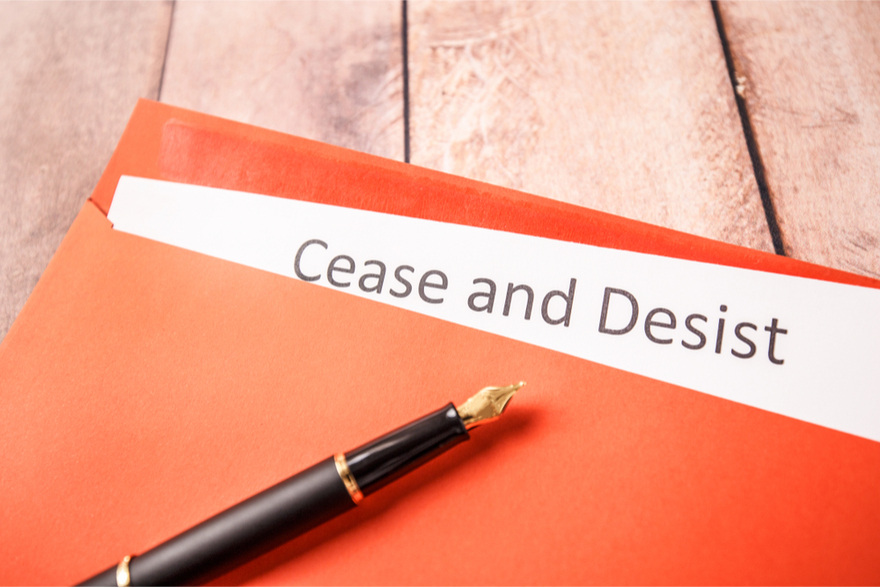If you’re a seller tired of rogue merchants hijacking your listings or you’ve accidentally crossed the line with another seller, cease and desist letters can be a highly effective way of correcting unproductive actions. RepricerExpress will show you how to protect your listings and credibility, no matter which side of the fence you’ve found yourself on.
If You’re the Seller Facing Listing Hijackers
You’re going along your daily routine of uploading and maintaining your listings when you’ve suddenly found yourself face-to-face with a page containing listings that look suspiciously similar to yours. You take a closer look and find that they’re almost carbon copies of your own — it looks as though that seller copypasted your work and passed it off as their own.
Not only is that not cool, but you also have no control over how they handle customers and affect your own brand, image and visibility. But how do you stop them?
Luckily, Amazon has a system in place to deal with listing hijackers. Start small with emails sent through the Amazon dashboard before working your way up to drafting a cease and desist letter with Amazon’s Plan of Action staff. Your goal is to get them to stop selling your products, so start with the gentlest and simplest means first.
Of course, you also have the option of not sending a cease and desist letter, as the more effective strategy at that moment could simply be to let the rogue seller run out of stock or pay them off. You’ll have to decide what’s best for you in the long run, financially, emotionally and time-wise.
How to Write a Cease and Desist Letter
Amazon has a template form you can use for your cease and desist letter. This is a good starting ground because they’ve dealt with this sort of thing more times than you have, and they know what general language is most effective.
One of the fields you’ll fill out on the form is confirming you’re the rights owner of the listing(s), and then describing how the property is your own. This can range from having full ownership over everything because you created, patented and branded the product, or it could be partial ownership limited to providing a warranty. Make sure you know exactly what rights to the intellectual property you hold, then describe it clearly and in detail.
Once Amazon’s gotten your form, they’ll get back to you with more questions to answer so you can set up emails in the future to support your Plan of Action. Your goal is to build a strong case of how and why your listings were hijacked, so provide as much convincing information as you can to let Amazon know they’ve got an unhappy customer on their hands. Remember — Amazon’s underlying goal with everything is to make sure the customer is always happy, so be strong in your wording and supportive information that what the listing hijackers are doing can make their buyers unhappy and displeased.
If You’re the Seller Who’s Received a Cease and Desist Letter
It can be a tough email to open when you wake up to find a cease and desist letter in your inbox. Whether you think it’s warranted or not, you need to take action right away or you could face account suspension or potentially costly legal issues.
If you’re convinced that you did absolutely nothing wrong and you’re on the receiving end of a spammy cease and desist letter, don’t just sit back and do nothing. There are some sellers out there who use this tactic as a means of scaring off competition from their landscape. However, the ball can be in your court, especially if the seller drafted the letter on their own and has a poor grasp of the law. It’s unethical to send out fraudulent or spammy cease and desist letters, so contact an attorney to see if you have any legal recourse.
However, if there is any substance or truth to the letter, then you’ll likely have to comply with its contents, i.e. stop counterfeiting or hijacking listings or whatever else it is that caused the seller to send you the cease and desist letter.
If you’ve received one of those, it might not be a legal issue — yet. That’s because Amazon uses the same practice as many other (large) companies of not stepping in until attorneys have made it their business. Think of the difference between a seller-drafted letter and notice before legal action — the latter is taken far more seriously because it has more weight behind it than the former.
In these cases, it’s a very good idea to contact a lawyer specialising in copyright infringement (or whatever the cease and desist letter is aimed at) so you can get proper and expert guidance as to how to move forward. As we mentioned earlier, the stakes can be high: account suspension, account termination, or even costly lawsuits and legal fees. The earlier you nip it in the bud, the better.
Final Thoughts
Amazon cease and desist letters aren’t fun for either party. They’re a sign that things took a wrong turn and required stronger action to make them right. They can also take a lot of your time and attention, which is why using RepricerExpress during this time makes a lot of sense. It’s automated and free of human errors so you can rest easy knowing a huge part of your business is being taken care of. To add to your peace of mind, we’ll start you off with a 15-day free trial when you sign up now so you don’t have to worry about costs during that time.



